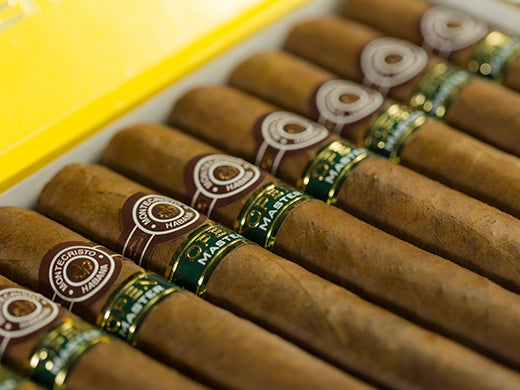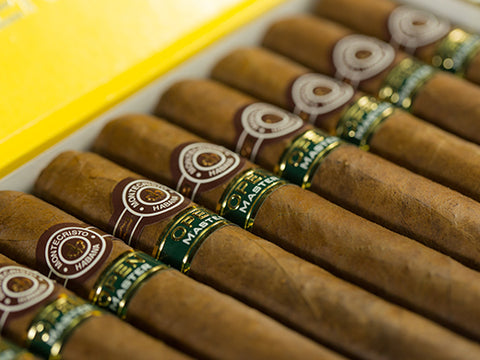Understanding Cigar Wrappers: Definition, Origin, Function, Characteristics, and Notable Examples


In this lifestyle of cigars and their connoisseurs, there are certain points of construction and processes that we always like to share with other connoisseurs who also enjoy a good cigar as much as we do. One of these points is cigar wrappers and their function and importance in the process. Since it is of utmost importance to inform both already experienced connoisseurs, as well as those who have just joined or are planning to join the cigar club. My Cigar Pack brings you today a definition of this process where cigar wrappers are the main protagonists.
The term 'cigar wrapper' holds significant importance. Essentially, a cigar wrapper is the outer layer of tobacco leaf carefully wrapped around the bunch of tobacco leaves, collectively known as the filler. It binds the filler and the binder, another layer of tobacco leaf around the filler, into a perfectly cylindrical shape, creating what we know as a cigar.
By definition, a cigar wrapper is the final tobacco leaf that envelops the entirety of a cigar, contributing heavily to its overall taste, quality, and aesthetic appeal.
Traditionally, the production of cigar wrappers is an intricate, skilled process requiring a high degree of craftsmanship. It begins with the cultivation of the tobacco plant. Once the leaves are grown, they are harvested and allowed to ferment for a variable duration which can last from a few months to several years. The fermentation process largely dictates the color, texture, and taste of the wrapper. Post-fermentation, leaves are sorted based on their quality, color, and size. Only the best quality leaves, typically large, without noticeable blemishes, and supple enough to wrap around a cigar without tearing, are selected as wrappers.
Cigar Wrapper - The Basics

You may wonder why cigar wrappers are lavished with such meticulous attention. The answer is multifold: Firstly, the wrapper substantially dictates the taste of the cigar, responsible for about 60-90% of its flavor depending on the cigar's size. Secondly, the visual appeal of a cigar is largely determined by the quality and color of the wrapper, and is thus crucial for commercial attractiveness. Last but not least, the texture of the wrapper, whether its grainy, oily, or silky, influences the smoker's tactile experience. For example:
| Wrapper Name | Color | Description |
|---|---|---|
| Connecticut | Light Brown / Tan | Known for its subtle flavor and smooth texture, often preferred for making premium cigars. |
| Habano | Dark Brown | Characterized by its robust, spicy, and rich flavor, mostly grown in Nicaragua and Ecuador. |
| Maduro | Dark | Traditionally fermented for a longer duration, it has a sweet, rich, and full-bodied flavor. |
The Origin & Characteristics of Cigar Wrappers

Delving a bit into the origin of cigar wrappers, it can be traced back to Cuba in the 19th century. As the cigar became a symbol of wealth and status, the demand for finer wrapper leaves increased. Today, cultivations have expanded to different parts of the world, and each region produces distinctively flavored wrappers.
The process of making a wrapper involves nurturing, harvesting, curing, fermenting, and sorting. The tobacco plants are grown under special tent-like structures that filter out some sunlight, creating thinner, smoother leaves. Once they are harvested, these leaves go through a curing process where they are hanged in a barn for a certain period to properly dry. Fermentation follows wherein the leaves are piled together for microbial and chemical processes to take place, enhancing their flavor.
In terms of characteristics, cigar wrappers vary widely. They are differentiated mainly by color, thickness, oil content, elasticity, and flavor. Regarding the color, it can range from the lightest shade 'Double Claro' to the darkest 'Oscuro'. The thickness varies, and thinner leaves are considered more desirable for their subtle influence on the cigar's flavor. The fat content or oiliness is another factor - oily wrappers not necessarily mean better quality, but more extended aging. Elasticity denotes the suppleness of the leaf which aids in the process of rolling cigars without them tearing - a trait highly valued. And finally, the flavor can differ extensively, ranging from sweet, earthy, spicy, to even cocoa, leather, and wood.
Remember, the art of cigars not only lies in the blend of the tobacco but essentially in the harmony that the wrapper can achieve with its fillers and binders. The harmony, flavor, and sensations you receive while you draw each puff make the whole experience worthwhile.
Interested in reading and learning more about cigars? Check out our blog
Determined to join this lifestyle and looking for information? check out our complete cigar guide for beginners and aficionados
Join Cigar Yard rewards program (With more ways to unlock exciting perks, this is your all access pass to exclusive rewards.)
Looking where to start the cigar lifestyle? start with us! You can see our collection, accesories & you can also join the MCP Cigar Club! We offer a variety of memberships for anyone who experiences the cigar lifestyle. Be sure to check them out and see which one best suits your needs.